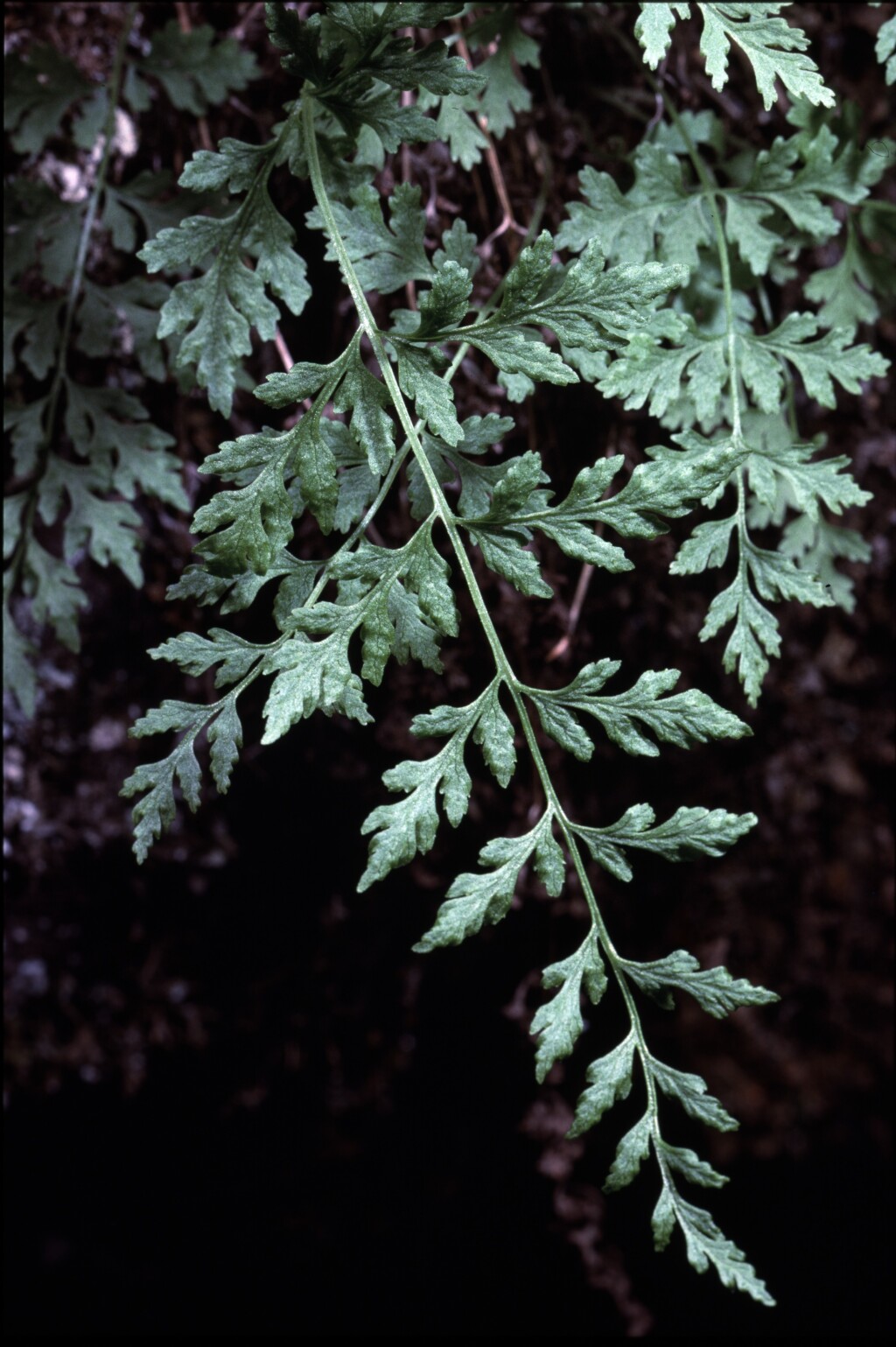Cystopteris tasmanica
Hook. Brittle Bladder-fernRhizome short, covered in thin, hair-tipped, shiny brown scales. Fronds delicate, clustered near tip of rhizome, 10–35 cm long. Stipe relatively long, slender, pale, grooved, scaly at base, scattered hair-like scales above. Lamina 1–2-pinnate with primary pinnae distant, lanceolate-oblong, light green to mid-green, membranous, glabrous; rachises slender and grooved. Pinnae shortly stalked near base of lamina, ovate to triangular, deeply lobed or toothed; primary pinnae ovate to oblong, up to 4 cm long; apices broadly acute. Sori near margins, numerous, round, on vein which continues beyond it; indusium attached at inflated base, delicate, pale, ovate and often with pointed or toothed apex, shed early.
EGU, HSF, HNF, MonT, VAlp. NSW, Tas. New Zealand, possibly South America. Rare in Victoria and confined to moist, shaded ledges and crevices of rock faces in alpine and higher subalpine regions, often near waterfalls (e.g Bryces Gorge, Bogong and Dargo High Plains, Little River Falls near Wulgulmerang).
The small fronds with a delicate, light green lamina are distinctive. The name C. tasmanica Hook. has been recently resurrected to include plants native to Victoria, Tasmania and New Zealand which are distinct from C. fragilis of the Northern Hemisphere (Brownsey et al. 1985, Brownsey & Smith-Dodsworth 1989). The fronds of Cystopteris tasmanica are less divided than those of C. fragilis, usually smaller, and the primary pinnae are shorter and have broadly acute, rather than tapering, apices. Cystopteris fragilis has been naturalised in parts of New Zealand but is so far unknown from Victoria.
Entwisle, T.J. (1994). Ferns and allied plants (Psilophyta, Lycopodiophyta, Polypodiophyta). In: Walsh, N.G.; Entwisle, T.J., Flora of Victoria Vol. 2, Ferns and Allied Plants, Conifers and Monocotyledons, pp. 13–111. Inkata Press, Melbourne.
 Spinning
Spinning


